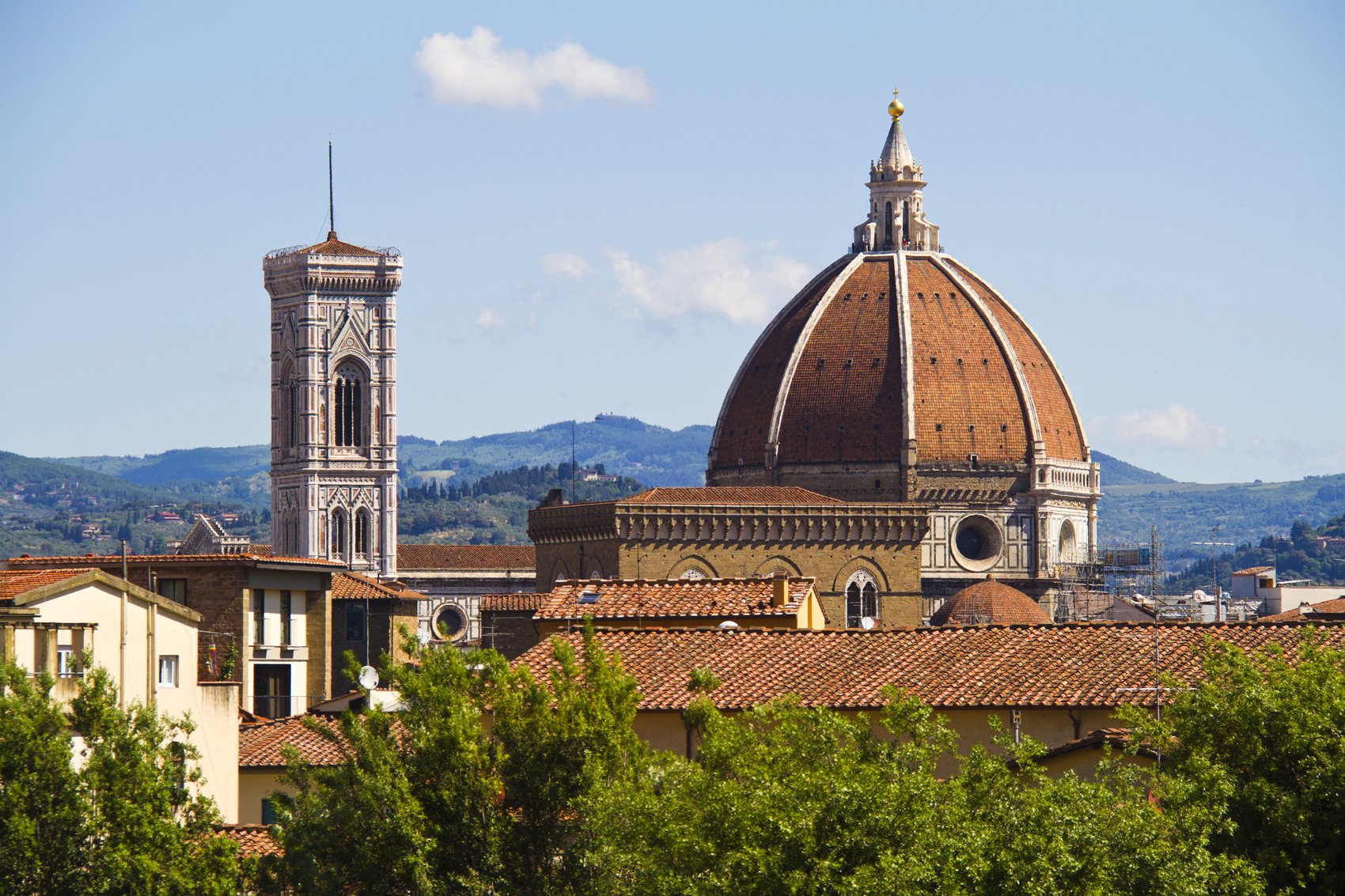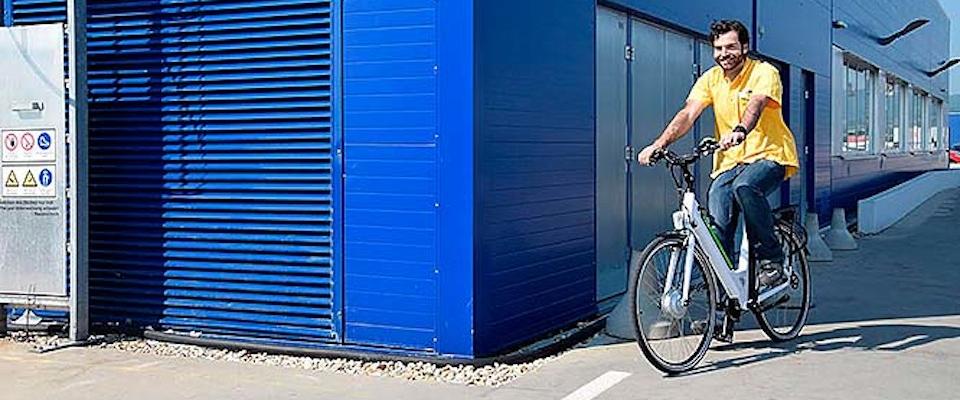For a transportation expert, Robert Cervero used to live a surprisingly sedentary lifestyle. Now a long-distance runner with 66 marathons and 112 ultra-marathons under his belt, he’s an advocate for run-commuting, and building infrastructure for better transit and urban development.
Referred to by colleagues as one of the top experts on transit-oriented development, Cervero is a contributing author to the IPCC (International Panel on Climate Change). A Professor emeritus, Cervero has taught and conducted research at UC Berkeley for 36 years and has published ten books, including his latest, Beyond Mobility, which won the 2019 National Urban Design Best Book Award.
In light of President Biden’s bid for the American Jobs Plan, a multi trillion-dollar infrastructure and jobs proposal that includes a $621 billion investment in transportation, we spoke with Cervero about the urgency of sustainable urban planning and the hurdles facing a much-needed upgrade of U.S. infrastructure. The President’s proposal has raised political debate as it is exceptionally ambitious, Cervero said. Yet climate change, systemic inequalities, and the challenges the U.S. faces to compete in the global market limelight a moment for boldness.
This conversation has been edited for length and clarity.
The word infrastructure has been in the news a lot since President Biden announced his $2 trillion plan to improve and repair roads, bridges, and tunnels, etc. He also proposes to provide electric vehicle incentives, increase investments in manufacturing, and improve elder care. Do these things fit your definition of infrastructure?
Historically, we talk about public infrastructure. The nature of public infrastructure is that my private consumption of it benefits the public at large. If I were to consume poor-quality water and get sick, that’s a public cost. If I use public transportation and help reduce traffic, the public benefits. But there’s some gray area, no question. Society is better off having healthy seniors, but the benefit is predominantly to the seniors themselves. We’re all better off with lower carbon emissions from electric cars, but much of the benefit is to the car owner. There’s enough stretching of the definition that it’s no great surprise this has become controversial.
The American Society of Civil Engineers recently gave U.S. infrastructure a C- grade. Things like dams and schools got Ds. How did it get so bad?
In California, we’ve been trying to build a high-speed rail system for the last 35 years. None of our airports in the entire United States are in the top 25 of global airports. Most of our infrastructure projects were built 50, 60 years ago and were designed for a 50-year service life. They’re dying on schedule, and we just haven’t sufficiently upgraded and maintained them. Meanwhile, other economies—particularly China—are building smart infrastructure at a dizzyingly rapid pace and are now poised to leap-frog well ahead of us. There are reasons China can do this: They’re a communist system. They have a national economic development plan. There’s no public debate. A lot of our infrastructure projects get embroiled in controversy and stopped. Also, our elected officials get political capital by cutting the ribbon on new projects, not by filling potholes. I hate to say it, but there’s this natural tendency in democratic societies to defer maintenance.
What do you think is the first step to improve this grade?
It depends on your objective. Historically, infrastructure has been about, first and foremost, increasing economic productivity and growing the economy and personal income—and what’s increasingly important is to be competitive in the global marketplace. As we compete with these other corners of the globe, we’d better massively invest in infrastructure to create green jobs and all the other parallel agendas. It’s about productivity, but it’s as much about job creation, social equity, climate stabilization. I think the nature of the times requires a kind of visionary, forward-looking approach.
Speaking of climate stabilization, how do you think infrastructure intersects with climate change?
Partly, it’s about mitigation; we’re trying to reduce carbon emissions to limit global warming to 1.5 degrees C, compared to pre-industrial levels. It’s a momentous target and you can’t achieve it unless you decarbonize transportation. You’ve got to move to electric vehicles. It’s not alone, but it’s critically important.
But it’s also about resilience. It’s about how we build roads and bridges so that they’re not going to topple in extreme weather. Obviously, this carries high costs and won’t benefit us so much as it will our children’s children. That’s historically how we thought about infrastructure. For example, it was probably very hard in New York City in the early 1900s to justify building the subways. But it was understood that the true beneficiaries would be the next generation. We have to think likewise when it comes to infrastructure and climate, which is really an intergenerational issue.
There’s also a lot of embedded carbon emissions from building dams and public infrastructure. Construction equipment is largely fossil fuel, and we can’t detach infrastructure from any policy trying to stabilize climate, build resiliency to respond to extreme weather, or reduce carbon emissions.
In your book Beyond Mobility you said that infrastructure planning should no longer be focused on mobility, but instead on “safety, health and access of people.” Can you explain what you mean by that?
As it relates to transportation, we travel to get personal benefits. For example, we travel to get to work, to make money, to eat at a restaurant, to meet a friend. In fact, travel is an impedance to the desired benefit: Historically, we’ve been left with very long commutes and congestion and having to build very expensive roads and bridges and highways to interconnect people.
If you look back in the 1800s, early 1900s, before most people had a car, the vast majority of urban development was within a walking distance of the train station—there was no other choice. With the innovation of the car we built these massive superhighway systems, but most of the travel on the interstate highway system is still within metropolitan areas—work commuting.
If we think of this as a challenge of access, not movement, then the legitimate approach is to mix land use as a more compact, walkable city, so you can also get the benefits of physical activity. It’s going to take on the rising obesity problem, build social capital, [bring] people [into] face-to-face contact, and, [help with] clean air. So, the core notion is that transportation is secondary; we need to really shift the focus to what matters to people, and where the needs of a pedestrian is not an afterthought, it’s central to its design.
How do long commutes affect people’s relationships to their communities?
It’s stressful to make a long commute. When you’re in a car dependent society where you’re in your little pod, your protected zone, and you’re frustrated by stop and go traffic, that has a high psychological cost. There’ve been studies showing that people who commute more become less socially engaged, that is they don’t get involved in local affairs. College educated suburbanites, mainly whites, are often in their cars, they’re not on the street, interacting face-to-face. They get to their private parking spot and go to the corporate office, and they’re around a very homogenous environment—people who have a similar social background and education. So, I think a car dependent society inevitably leads to a dissolution of social capital. We get a much more understanding, empathy, caring society when we’re on the street, walking and interacting or taking public transit, and not limited to our private cars.
The Biden infrastructure plan also includes $20 billion to reconnect neighborhoods split by highways. Can you talk about the impact that past infrastructure projects have had on communities of color?
Historically, the engineering mentality was to connect the high-salary, college educated, predominately white suburbanites to the high paying office towers in the central city. So, to build motorway systems, but also public transit, regardless of the working-class neighborhoods right outside the central business districts. It was transportation driven by an engineering vision—splintering of historical working class and inner city communities was never a consideration, not even an afterthought. There’s no question there’s extreme inequities from those historical practices.
“I began running—a half mile, then a mile, then several miles. I’d lose some weight, run a bit faster, and then lose even more weight. Within a half year I ran my first marathon.”
There is also an environmental justice argument that a lot of minorities outside of the central business district get high exposure to pollutants from cars, trucks, and drains, the movement of commercial goods reports, etc., [which causes] higher asthma rates and premature deaths from cancer. Some cities have torn down these elevated freeways and replaced them with greenways. Think of the Big Dig in Boston and the Embarcadero in San Francisco. It’s not a cure, but it’s one of many strategies we could introduce to really rebuild and revitalize our central city areas.
To change subjects, can you tell me about run-commuting?
Some ten years ago, I started noticing lean, youthful folks running trails and pathways paralleling commuter routes with small backpacks. Run commuting—a way to ‘kill two birds with one stone’ by mixing training runs with commute trips—was particularly prominent among office workers in Washington D.C. and London. This fascinated me, to the point that when I was on sabbatical in the UK (at Cambridge and University College London), I delved more deeply into the subject. Survey work revealed that run commuters, many who run 10K to marathon races, not only felt perkier and a clarity of mind when at work, but also had more time available for friends and family because of less time needed to be set aside for training runs. It’s no doubt the healthiest—physically and likely psychologically—way of getting to work, even if you’ve got to take a train or a bus for part of the way.
How did you start running?
In the early 2000s, I was contacted by the Robert Wood Johnson foundation to join an expert advisory panel, which I chaired. At seminars, researchers showed that sedentary living was a major contributor to obesity. That was my lifestyle at the time—sitting in an office chair for eight hours a day. I was overweight and stuck in a sloth-like existence. The Active Living movement lit a fire under me. I began running—a half mile, then a mile, then several miles. I quickly got into a virtuous cycle wherein I’d lose some weight, run a bit faster, and then lose even more weight. Within a half year I ran my first marathon. To date, I’ve completed 66 marathons and 112 ultras, mostly on mountainous trails, ranging from 50Ks to 100-milers. While I haven’t run a race in over two years, I still run a lot, albeit slowly, this year averaging over 200 miles a month.
Overall, are you optimistic that there is enough time and political will to build sustainable and equitable infrastructure in this country?
I think we have to be optimistic. I certainly would say we should not, and we cannot, continue business as usual. And I think the president’s plan is an important step in the right direction. I also think this plan is so large that the incumbents are going to resist it. I’m heartened by the fact that Biden was a longtime senator and learned the art of compromise. I think he went out with a very aggressive plan, realizing the more aggressive he was, the more likely he was to get some reasonably bold step forward.



















